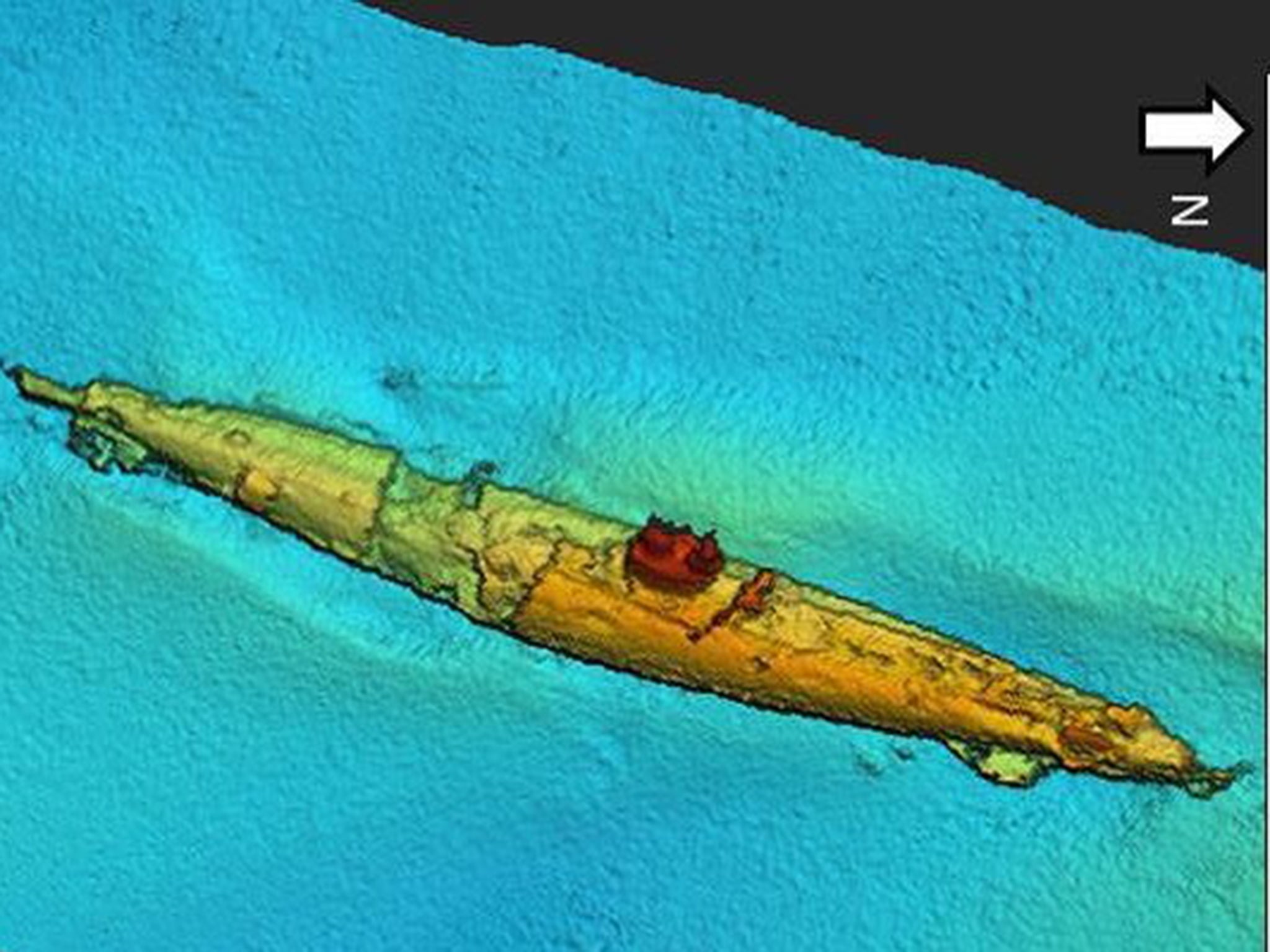Wreckage of century old German U-boat discovered off Scottish coast
Sonar images reveal the World War One submarine is largely intact

The wreckage of a German U-boat that sank almost a century ago has been discovered at the bottom of the sea off the Scottish coast.
Sonar images have revealed the World War One submarine, which was found by engineers laying undersea power cables, is largely intact.
Experts believe it could be the UB-85, a submarine which was sunk by HMS Coreopsis in 1918.
The entire crew of the U-boat reportedly abandoned the ship, with some claiming they had been attacked by a "sea monster".
Innes McCartney, a historian and nautical archaeologist, who has been working to identify the wreck, concluded the mystery of UB-85 could be one step closer to being solved.
“The features of this particular wreck, which is largely intact, confirm it as a UBIII-Class submarine, of which we know of two which were lost in the area – the more famous UB-85 and its sister boat UB-82,” Mr McCartney said.
“While I can conclude that this wreck is likely to be one or the other, they would be practically impossible to tell apart, aside from the numbers painted on them in service, now obviously long gone."
While there is likely a straightforward explanation for the sinking of the submarine, Gary Campbell, keeper of the Official Sightings Register of the Loch Ness Monster, believes that it is "entirely feasible that some large sea creature disabled the submarine".
“The area of sea where the attack took place has a history of sea monster sightings – they have ranged from the north coast of Wales to Liverpool bay. What the German Captain said could well be true,” Mr Campbell said.
“It’s great to see how Nessie’s saltwater cousin clearly got involved in helping with the war effort – she even managed to do the damage without anyone being killed.”
The discovery was made by engineers working on the £1 billion joint project by Scottish Power and National Grid to lay one of the world’s largest subsea power cables, which will carry renewable energy from Scotland to England and Wales.
Join our commenting forum
Join thought-provoking conversations, follow other Independent readers and see their replies
Comments
Bookmark popover
Removed from bookmarks